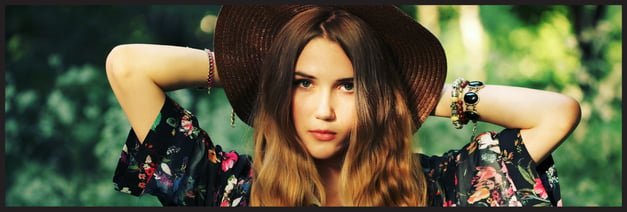 It’s fair to say that Instagram, the image-driven social platform, and fashion brands are a match made in heaven. Beautiful, editorially inspired product shots, glamorous red-carpet photos of celebrities adorned in their latest frocks, and runway video that gives Fashionistas a front-row seat at the shows drive engagement on the feeds of Louis Vuitton, Michael Kors, and Victoria’s Secret. Athleisure giants Nike, Adidas, and Under Armour offer #fitspo and tap into the popularity of athletes. Meanwhile, retailers such as Anthropologie and Urban Outfitters curate lifestyle-oriented product shots alongside sale announcements. These approaches to innovative storytelling give megabrands an ability to learn what drives engagement with their followers and extend their reach, but do those same tactics work for independent fashion designers? Let’s look at some ways emerging designers can make Instagram work for them.
It’s fair to say that Instagram, the image-driven social platform, and fashion brands are a match made in heaven. Beautiful, editorially inspired product shots, glamorous red-carpet photos of celebrities adorned in their latest frocks, and runway video that gives Fashionistas a front-row seat at the shows drive engagement on the feeds of Louis Vuitton, Michael Kors, and Victoria’s Secret. Athleisure giants Nike, Adidas, and Under Armour offer #fitspo and tap into the popularity of athletes. Meanwhile, retailers such as Anthropologie and Urban Outfitters curate lifestyle-oriented product shots alongside sale announcements. These approaches to innovative storytelling give megabrands an ability to learn what drives engagement with their followers and extend their reach, but do those same tactics work for independent fashion designers? Let’s look at some ways emerging designers can make Instagram work for them.
It’s Not Just a Brand, It’s a Lifestyle
Are you aspirational? Approachable? Fun? Bohemian? The challenge for many marketers is determining how to convey their brand image in pictures and keep it fresh and interesting to their followers. Start by creating a word cloud that encapsulates your brand; witty, playful, serious, avant-garde, curious…what makes your brand unique and sets it apart from its competition? Next, create buyer personas for your brand to gain an understanding of your core customers. You’ll find your lifestyle sweet spot where the two intersect.
A Word About Hashtags
Hashtags are a great way to get your posts noticed on Instagram and engage followers. According to L2, 80% of brand posts contain at least one hashtag, and the average brand post will have three. Most fashion brands use popular industry tags so they’ll consistently show up in searches, but many well-established brands like H&M also regularly use their brand hashtags (#HM, #HMLife, #HMSport) to encourage followers to use them in their own posts.
Influencers and User Generated Content
Red-carpet influencers can generate millions of likes and comments from followers, but the ability to partner with influencers isn’t exclusive to big brands. Smaller, indie brands can work with respected fashion bloggers who share their aesthetic as a way to gain a new audience. Similarly, user-generated content—posting pictures of the brand’s customers wearing their clothing—is a proven way to increase engagement and generate excitement about your brand. Similarly, creative storytelling featuring the brand’s founder invites fans to become part of the brand and therefore, part of the story.
What About Video?
Although video is the new king of content across many platforms—and racks up better organic reach on Facebook—it seems that video on Instagram is best used sparingly and under specific circumstances (e.g., runway shows or presentations). Analysis of fashion brands on Instagram found that users prefer images and frequently scroll past video content.
From Social to Retail
Instagram’s influence is beginning to directly feed into what retailers are buying—especially as the demand for smaller, niche brands grow. According to an article in the Guardian, buyers at Selfridges and Net-a-Porter are using Instagram as a tool to discover new designers and as a barometer of consumer engagement with smaller brands. Instagram as a bridge between brands and retailers is a concept that’s still in its infancy, but it will grow as retailers aim to offer an ever-changing and unique selection of goods from around the globe. To aid in discovery, develop an editorial strategy that’s consistent with your brand’s voice and story, then develop an editorial calendar and maintain a regular posting schedule. Finally, evaluate engagement by determining what content resonates with your audience.
Fashion brands do well on Instagram not only because they use the above tactics, but because Instagram’s visual appeal is an ideal way to showcase their products and engage consumers. Marketers can now leverage Instagram’s shoppable advertising units to ramp up excitement for their products and allow consumers to click-to-buy. Contact us today to learn how Women’s Marketing can help you to identify the right social media planning & buying strategies for your brand.



COMMENTS